The world is changing at an astonishing pace. Some of the changes are quite profound and dramatic. Many things that make up our daily life are shifting and repositioning themselves within a new frame created by the altered needs and aspirations. Once again, a new Time-Spirit is coming into being.
Being at the very core of this change – of any remarkable change – the Artist is bound to follow and to reflect the new developments in his work. Intellectually (rationally) or intuitively (emotionally), directly or indirectly, he responds to the impact the change makes on the people, the society and the environment. The old construction is falling apart making space for new ideas that seek embodiment. In this seemingly perpetual process many old insights and solutions to the ever present dilemmas of existence, worn-out by Time and overuse, are dismantled and rejected. Many things that appear to have a universal character, or embody the timeless values – things that if properly adapted and updated could possibly be of great benefit to the new construction – are also discarded just for the sake of not being new.
Urged by his creative instincts, the Artist might simply state the facts, or reflect upon the current issues in an attempt to find a new point of view, a new approach, a new vision. He even might try to communicate a deeper message by placing the everchanging transient World against the permanent and incomprehensible background of the Infinite. For a true artist – the one who is utterly and uncompromisingly dedicated to his vocation – is a frontier man, a pathfinder, a visionary and a true seeker. By the very nature of his vocation, he is destined to venture into the unknown territories, to roam through the pathless lands, to give form to the formless and eventually “point out his finger to the Moon”.
Now, what if that same new construction, that “progressive” new order of things, for some reason becomes regressive and restrictive, eventually depriving the Artist of his basic need and his most precious possession – his freedom – freedom to express himself, to speak out, to create as his consciousness urges him to do? And, what if this new world has lost the connection with the transcendental, with its spiritual foundation, with its Myth, and as a consequence has replaced a bigger picture with a smaller one, a narrower one, putting in its center mainly economic and commercial needs and aspirations, in other words its obsession with the material and the external? How should an artist, true to his vocation, act in such situation?
Romanticism – and the need for Neo-Romanticism
Romanticism was an artistic, literary, musical and intellectual movement in Western civilization, originated in Europe in the late 18th and lasted to the mid-19th century. The ideas of Romanticism made a significant impact, with far-reaching consequences, on the way how men perceived himself, the World and his place in it.
Romanticism was characterized by its emphasis on emotion and individualism as well as glorification of all the past and nature, preferring the medieval rather than the classical. It was partly a reaction to the Industrial Revolution (nowadays, this could be compared with digitalization and robotization), the aristocratic social and political norms of the Age of Enlightenment (political correctness, materialism and the negative sides of globalization), and the scientific rationalization of nature (loss of the collective myth).
Romanticism’s essential spirit was one of revolt against an established order of things-against precise rules, laws, dogmas, and formulas that characterized Classicism in general and late18th-century Neoclassicism in particular. It praised imagination over reason, emotions over logic, and intuition over science-making way for a vast body of literature of great sensibility and passion. In their choice of heroes, also, the romantic writers replaced the static universal types of classical 18th-century literature with more complex, idiosyncratic characters. They became preoccupied with the Genius, the Hero, and the exceptional figure in general, and a focus on his passions and inner struggles and there was an emphasis on the examination of human personality and its moods and mental potentialities.
Defining the nature of Romanticism may be approached from the starting point of the primary importance of the free expression of the feelings of the artist. The importance the Romantics placed on emotion is summed up in the remark of the German painter Caspar David Friedrich that “the artist’s feeling is his law”. To William Wordsworth, poetry should begin as “the spontaneous overflow of powerful feelings,” which the poet then “recollect[s] in tranquility,” evoking a new but corresponding emotion the poet can then mold into art.
According to Isaiah Berlin, Romanticism embodied “a new and restless spirit, seeking violently to burst through old and cramping forms, a nervous preoccupation with perpetually changing inner states of consciousness, a longing for the unbounded and the indefinable, for perpetual movement and change, an effort to return to the forgotten sources of life, a passionate effort at self-assertion both individual and collective, a search after means of expressing an unappeasable yearning for unattainable goals.”
In the realm of ethics, politics, aesthetics it was the authenticity and sincerity of the pursuit of inner goals that mattered… This is most evident in the aesthetics of romanticism, where the notion of eternal models, a Platonic vision of ideal beauty, which the artist seeks to convey, however imperfectly, on canvas or in sound, is replaced by a passionate belief in spiritual freedom, individual creativity. The painter, the poet, the composer do not hold up a mirror to nature, however ideal, but invent; they do not imitate (the doctrine of mimesis), but create not merely the means but the goals that they pursue; these goals represent the self-expression of the artist’s own unique, inner vision, to set aside which in response to the demands of some “external” voice – church, state, public opinion, family friends, arbiters of taste – is an act of betrayal of what alone justifies their existence for those who are in any sense creative.
The Romantic association of nature and spirit expressed itself in one of two ways. The landscape was, on one hand regarded as an extension of the human personality, capable of sympathy with man’s emotional state. On other hand, nature was regarded as a vehicle for spirit just as man; the breath of God fills both man and the earth. Delight in unspoiled scenery and in the (presumably) innocent life of rural dwellers was a popular literary theme. Often combined with this feeling for rural life is a generalized romantic melancholy, a sense that change is imminent and that a way of life is being threatened.
Academism – Regarded here as Traditional Formalism; a tendency toward traditionalism or conventionalism in art; any attitudes or ideas that are learned or scholarly but lacking in worldliness and openness, which makes them stiff and inflexible, often lifeless, and slaves to rules and norms. After a certain point, Academism of any kind must eventually be replaced by new attitudes and ideas that embody the opposite – free, unrestrained, individual expression.
Propelled by the development of digital media, the Internet and all the rest of it, Art, and the commercial arts in particular, are undoubtedly going through a period of remarkable development and change. However, at the same time – all good things of this dualistic World must have a shadow – it seems that a form of Academism has slowly crept into the field of Fantasy Art over the years, which is a contradiction for these two phenomena are essentially of a different, if not opposing nature. One is, as pointed out above, based on formalism and conventionalism, the other on imagination – by nature unrestricted and bundless – expressed through a hard to define symbolic language originated mainly in the collective unconscious.
In my personal opinion, there are at least three reasons for this situation: 1- easy access to the prefabricated digital tools – the same advanced programs and digital tools are being used by many, hence the increasing sameness and uniformity of the visual expression, followed by a decrease in inventiveness and originality; 2- The pressure imposed on the artist by the client (the market) to produce a specific kind of look, or style, resulting in the lack of artistic freedom and the marginalization of the importance of free expression; 3- too pragmatic way of teaching Art – too much emphasis on the technical aspects of creating Art and the obsession with the naturalistic depiction of forms on one hand, and the lack of attention to the Spiritual and the Contentual aspect of Art on the other.
Decadence – Often referred to as “moral or cultural decline as characterized by excessive indulgence in pleasure or luxury means”, or “decadence presupposes a reaching and passing the peak of development and implies a turn downward with a consequent loss in vitality or energy”. That is what we usually mean when we use this term. But if looked at through the prism of psychology, decadence represents a state wherein the means to a goal become the goal itself.
For instance, an important aspect of Visual Art is the relationship between the outer form and the content. The form and the content often appear to be separate and of a different nature, hence the perception that one cannot compensate for the lack of the other. The content needs an outer form to be contained in and to communicate through. When separate and on their own, the form and the content become meaningless. But when put together and related to each other in a balanced way, or desired manner, they create a potent and meaningful whole. Failing to see and acknowledge this principle inevitably leads to the impoverishment of some degree. A full potential can be reached only if the outer form and the content are seen as one, inseparable phenomenon. We find a perfect expression of this in music (sound = form) and in the immediacy of its effect, more often than in visual arts.
These were just a few hints from a subjective point of view presented here in order to point out an issue, or that which the writer of these lines sees as an emerging problem. Of course, there is no one, right way to approach the problem – many roads lead to Rome, as they say. In fact, all is so wonderfully confusing and clear at the same time. Everything is so utterly relative because all depends on the relative truth of the individual perception, which reflects the individual’s current level of awareness.
Here is an example. The following statement is based on one’s experience and reflects a gained insight – The fundamental secret of all great art lies less in what is depicted, or even how it is depicted, but in how deep it is felt. This refers both to the subject matter and the creative process. Basically it depends on the artist’s ability to Love. As far as the subject matter is concerned, one needs to be able to internalize it, to become one with it. That is to say, to connect to it on a level that is beyond mere visual perception. If the subject matter is treated only as a surface appearance, the results will probably be shallow and the depicted object, or scene, might turn dull and lifeless. At its best, it will present a well-polished empty shell.
Here is another one – Only an imperfect man can be a perfect artist. To a fully awakened person Art is redundant, as is the road to a traveler that brought him to his front door.
How many of you, right now, would agree, let alone identify with what has been said? Some perhaps, but certainly not too many, and definitely not all. But, that’s perfectly ok. That’s how it should be. At the end, all we can do is exchange imperfect and limited personal insights, opinions, beliefs, etc., while at the same time keeping in mind that one’s own truth may not necessarily be somebody else’s truth. That which has helped a particular person, might perhaps have a negative effect within the frame of somebody else’s story. But, what about those things that “appear to have a universal character, or embody the timeless values” mentioned in the second paragraph, if everything is so relative and personal, one might ask?…Well, the only thing I can say is that Life is basically a paradoxical phenomenon. It is the greatest Wonder and the greatest Mystery. Ultimately, it’s up to the Artist not to try to reveal that which cannot be revealed, but rather to stand in front of it in utter awe…and eventually lose oneself in it.
Good luck!



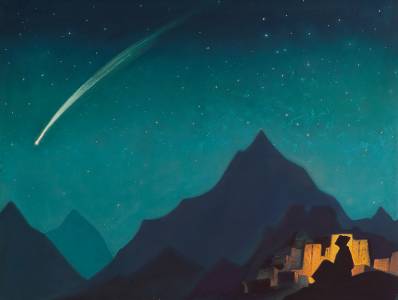
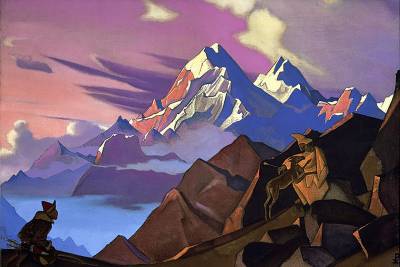

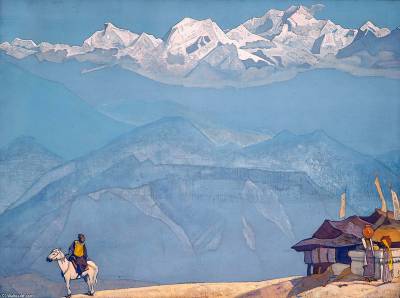

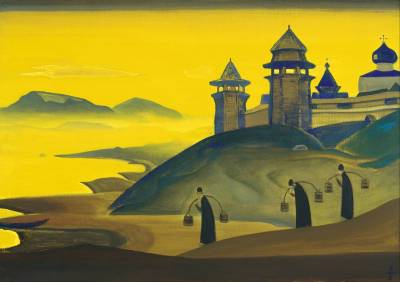
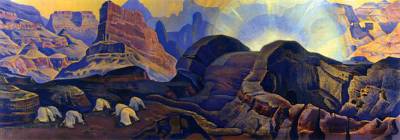
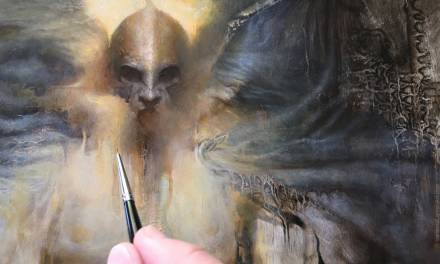
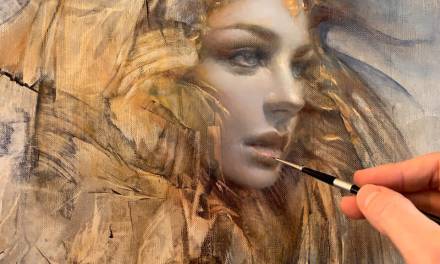
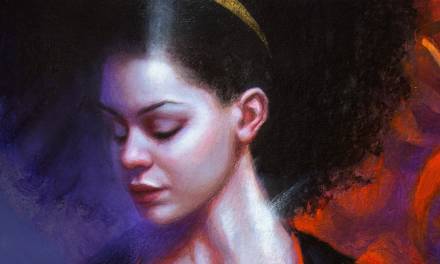
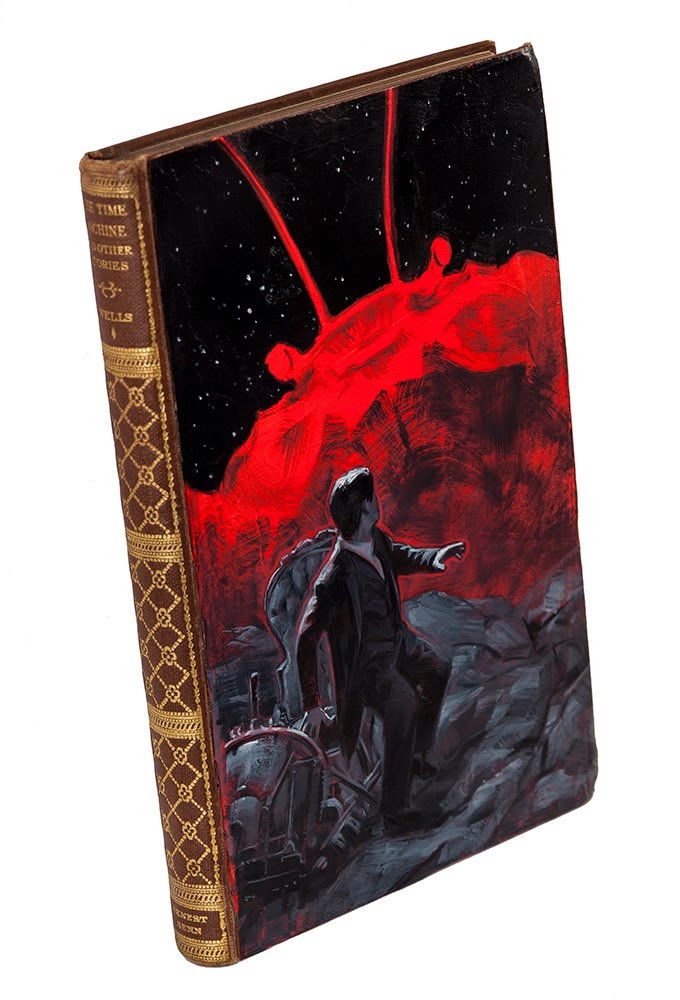
I think it’s necessary to balance technical excellence and inspiration, somehow, although more a dancer’s balance. We pity a person who has lost a hand, as someone handicapped, and so they are. I think a person is equally handicapped, or off balance, if they only use one part of their mind. The ‘right handed’ truth of science, technical excellence, all the things we think of with that mindset is necessary for sound building – of ideas, buildings, artwork too. The ‘left handed’ truth of myth, beauty, inspiration is equally important for building both physical and mental artwork. A gorgeous building that isn’t physically sound will collapse. An ugly, physically sound building will not be loved and will be demolished and replaced.
What lasts then? The beautiful AND physically sound building, people will love it and care for it. So too with art. It’s a dancer’s balance, to learn the technical skills needed to bring your own truth/beauty/insight/inspiration out to its fullest potential. I love Chagal, Klay and Klimt – their work looks primitive, and technically I suppose it is. I love Rodin’s work too, but all these artists are expressing something powerful without words. All of them learned their craft well.
But I also love the Academics’ work. The tremendous skill with which they told their stories delights me. I don’t see them as drudges crafting perfect, sterile images, I see them as making a beauty to speak to the eye and mind every bit as much as the more spontaneous styles that don’t want or need graphic rendering perfection. BOTH forms of artwork speak well to the viewer, and there is no contradiction. I want to welcome beauty into my life, from the physical world and from the minds and hearts of artists who hone and shape it with their minds, hearts and hands. I also am quite familiar with the story of The Emperor’s New Clothes and that’s what comes to mind every time I see some bizarre installation of ‘WTF is this?’ Often interesting, sometimes entertaining, but only rarely thought provoking beyond cynicism, particularly when watching people who gush over it. It’s off balance, like the time I heard a woman gushing to her less educated friend about the technical aspects of Goya’s fierce etching “Tampoco” (translates rather like ‘Bummer’ or a rather sarcastic, “gee what a shame’) depicting a bored soldier staring at a poor, hanged villager. “The chiaroscuro of the image and the existential aspects of…” ignores the entire POINT of Goya’s rage and sorrow at the apathetic soldier and the miserable fate of the civilian.
I despise the “fine art (TM)” as personifying the worst of the mercantile system. Their product is a carefully crafted combination of ugly, obscure and jolting and is made that way to lure buyers. It is all these things to keep too many people from liking it and thus ‘cheapening’ the product, it is absolutely essential for the prospective buyer to feel that the product they bought is valuable and a marker of their own estimable ‘discerning, esthetic sensibilities’ – and to compete with their peers for the status of owning these things. If you’re in an unkind mood, try going to one of these exhibits wearing inexpensive clothes and gush over how much you just adore the artwork. You will upset the patrons AND the artist greatly – obviously the art isn’t obscure enough if a peasant likes it! I have actually seen a lecture by a ‘fiber artist’ who discussed the logic of his work and how it affected his sales – it touched on all these points too. The ultimate expression of this was the recent big fuss about the Banksy ‘Girl with a Balloon’ piece that shredded itself after the hammer fell on its auction. Hoax? Publicity? Art??? No, I think it was clever marketing on Banksy’s part, but it’s due more to the nature of the business. The piece is now called Art is in the Bin.
Thank you, Elena. It was interesting to read about your opinion and your personal likes and dislikes. I am sure many people would agree with your observations…and perhaps many would disagree, for they too have their own personal opinion, their likes and dislikes.
Petar, excellent write up and a lot to think about.
I wonder, on your three thoughts for the reason ‘academism’ is creeping into the fantasy art community, if there’s a mix of one and two at play. Namely the internet providing insights into what everyone else is creating. It’s bad enough that one can fall into the trap of scrolling past and liking a bunch of art instead of considering why it strikes a chord or instead of making art yourself, but it feels to me like the fantasy art world is at a point of curating itself in the somewhat rigid patterns of what was successfully marketed before. The pressure within the fantasy art world to maintain a kind of status quo in terms of *subject* feels particularly heightened to me because of the access granted to everyones’ work all the time online. I remember my access to art (and fantasy art in particular) was far more restricted when I was younger and the internet was just starting to get going. Maybe it was just youthful energy and a lack of cynicism at the time, but I recall feeling far more curious and inspired then I have in a long while now. Things aren’t helped by the fact that everyone has less and less time to discover different inspirations just by random happenstance (be it nature, books, music, a new town, etc.)
I’m curious as well as to the lines that might surround your perception of academism in art. Does it simply come down to if a piece of art moves you in some way spiritually or emotionally? I know you mentioned hard to define symbolic language, and I suppose when the artist IS connected on that special wavelength with what they are creating, any of the marks they make or composition decisions that are made (intentionally or not) communicate that unspoken language- but many artists who partake in more academic realism seem to strike that emotional chord with me at least. It’s certainly a cloudy area to try and figure out, but it’s very much appreciated food for thought.
Hi Katie – I understand now the confusion that the term Academism has caused. I thought I was clear enough, but apparently that was not the case. When I use the term Academism in this particular context, I do not refer to the 19th century art movement as such, and certainly not to the esthetic achievements of its representatives, especially the most prominent ones – which I am a big admirer of – but more to the implications of its ideological foundations and its “statute”, or set of rigid rules, and how it eventually deprived itself of vitality and worked itself into a dead end. Hence the pejorative connotation the term Academism was attributed to during the 20st century.
Anyway, let me clarify the essence of what I tried to communicate here. When things get narrowed down and limited by rules, clichés and rigid norms, when they get repetitive and predictable; when the relationship between the intellectual/rational, and emotional/intuitive gets out of balance; when there is a tendency to define and limit whatever aspect of Life by “distilling” it into some kind of a formula, a “magic potion”, then there is no immediacy, spontaneity and freshness of expression. Hence Life goes away and the “patient” has to be kept alive by artificial means…. Life is fluent and on a constant move – everchanging, ever-new, every moment is fresh and unique – “one cannot step into the same river twice”. See the sky – it is never the same. Every morning is different, every day is unique, every hour, every minute, every moment…Once the artist experiences, touches this cord, once he becomes fully aware of it, Life becomes a true Wonder, ever changing, ever moving, ever growing, ever developing, never stopping. It presents itself as utter Miracle – exactly as it is, right here, right now. And so is the next moment, and the next, and next… Once you realize that, once you taste this abundancy of possibilities, this spaciousness and beauty, even if it’s just for a brief moment, you cannot not be in awe, and want to try to convey the experience of the fluentness of being….How could one possibly be able to translate this into definitions, rules and dogmas? The more an artist is aware of this, the freer he becomes, and the more spontaneous and truer (to his own being) his art becomes.
Well, it is obvious that a commercial artist, a proper professional illustrator, will have great difficulties to unite this with the requirements of his professional job, especially if the market gets more restrictive and rigid. Nevertheless, it is certainly worth trying, for this is nothing else than coming back to oneself, and it always pays off.
Thank you for clarifying Petar, it helped a ton! Definitely something to think about and strive for when creating.
Hello Petar,
I enjoy your philosophical texts and thoughts everytime.
This one in particular came at the right time.
Thank you very much for this unexpected help!
Hi Sebastian – I am very glad to hear (read) that these subjective musings can still inspire and offer some support to other people. I presume that the approach to Art and the ideas about it that are communicated through this series of essays, as well as the way they are presented, might not be very popular in certain, well established circles. However, I do know that there is a group of young artists out there who are quite open and are eager to hear about it. I have a strong impression that there is a growing, genuine need among young people to address and to feed some deeper longings within themselves that, presently, do not get enough attention within the Fantasy Art community. That which might appear redundant and irrelevant, or even pretentious to some, to others it is a necessity, something that is crucially important for their further development both as artists and human beings. So, Sebastian, thank you for stopping by and letting me know that you are one of them who have an ear for deeper aspects of Art and the creative process!